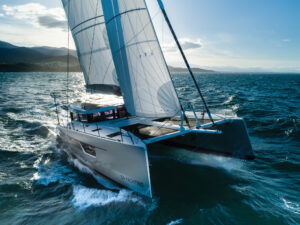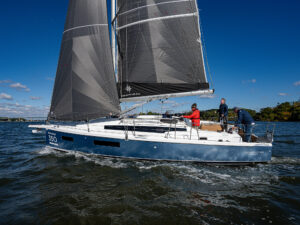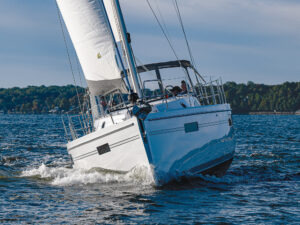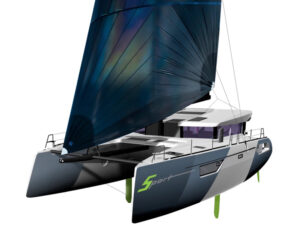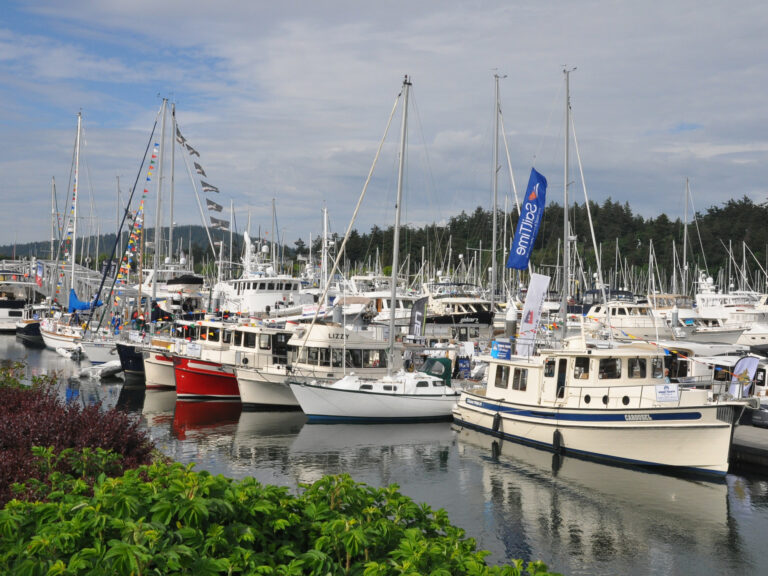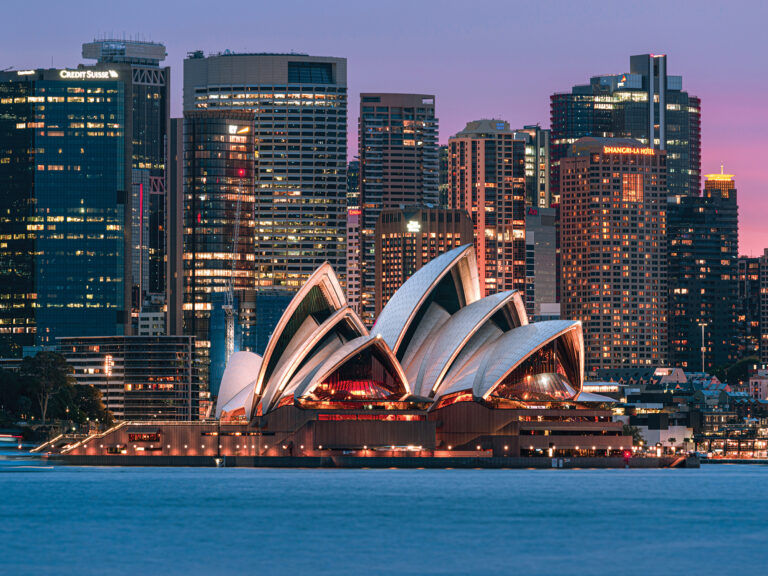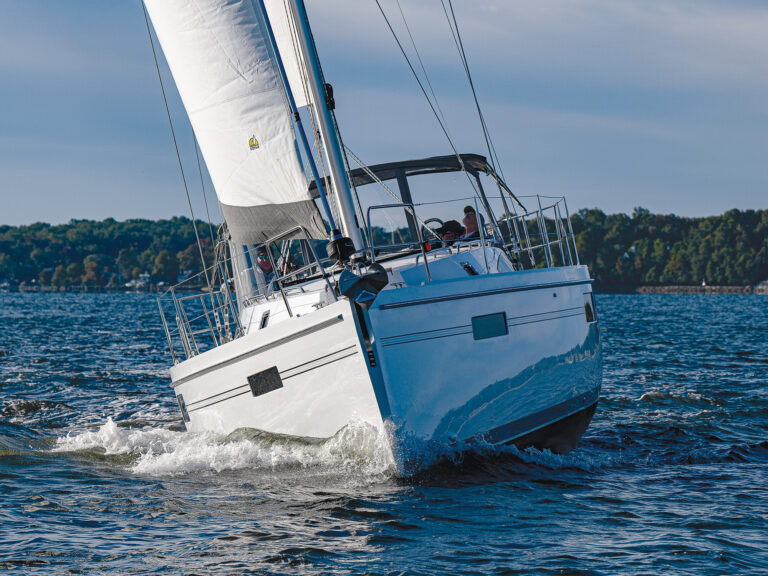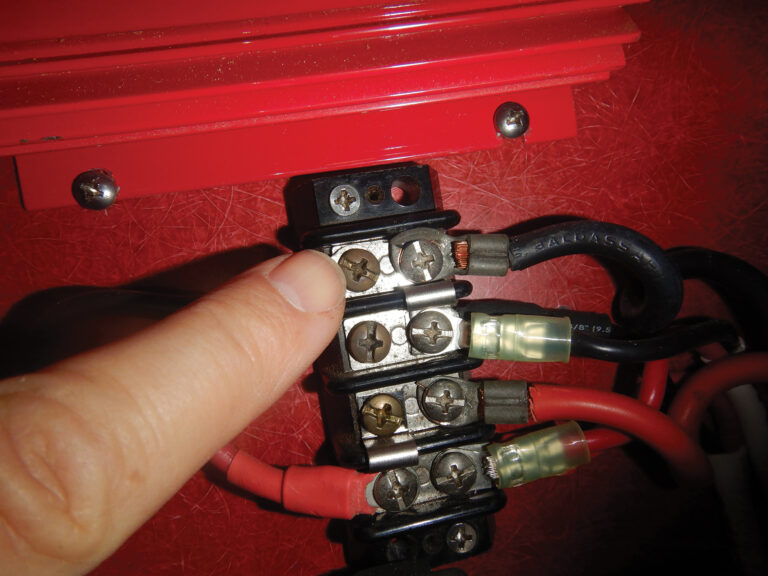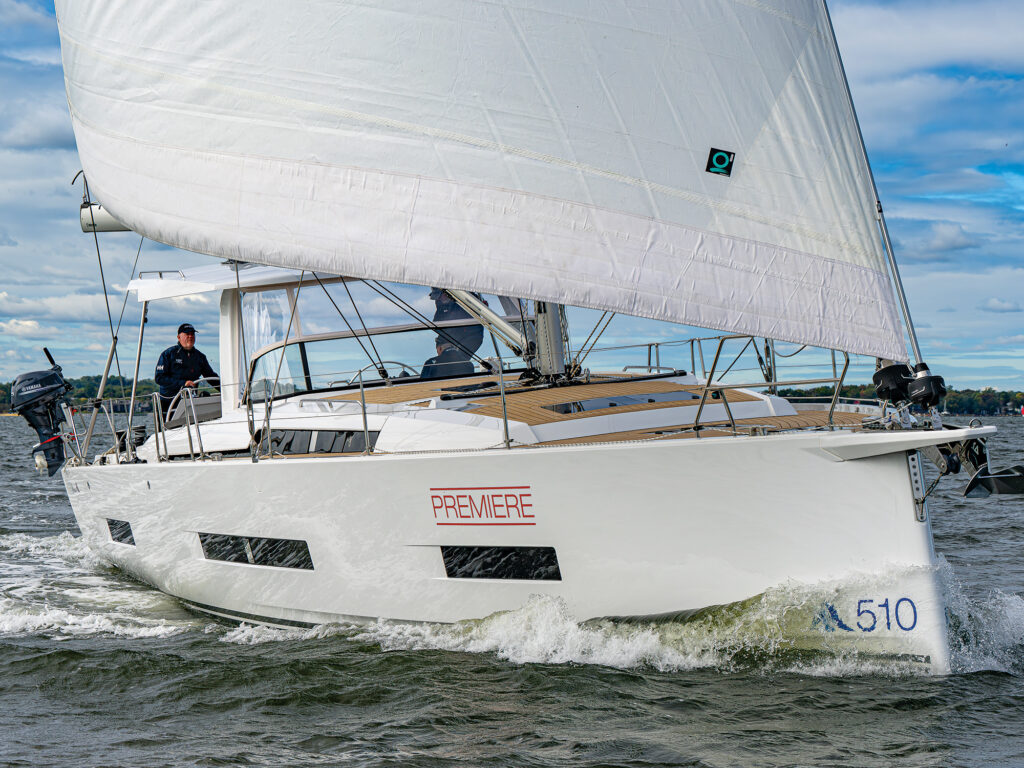
Fifty years ago this month, the first issue of Cruising World magazine debuted at the US Sailboat Show in Annapolis, Maryland. It was an ideal time to launch a cruising and sailing periodical, as a revolution in production fiberglass boatbuilding was underway. Huge numbers of sailors were eager to purchase new boats, and the choices in size, price and purpose were plentiful.
Sure, there were lots of imports on the market, especially from France and the Far East, but there were plenty of great boats born in the USA. The builders and their brands were practically synonymous: Hunter (Warren Luhrs), Catalina (Frank Butler), Morgan Yachts (Charley Morgan), Irwin Yachts (Ted Irwin), Pearson (Bill Shaw), Sabre (Roger Hewson), Shannon Yachts (Walter Schulz), and on and on.
Why bring all this up? Well, of all those companies, only Catalina still builds sailboats, and in limited sizes and numbers. All those other former household maritime names are little more than fond memories. The once-powerful US production-sailboat industry has basically ceased to exist.
But cruising remains as alluring as ever—nature abhors a vacuum—and several of the production-boat builders that have filled it are conglomerates aimed at serving the nautical masses.
One of the most notable, with a trio of popular lines (Hanse, Dehler and Moody), is Hanse Yachts AG, the German manufacturing colossus based on the Baltic Sea. This past fall, in our annual Boat of the Year competition, we tested their latest offering to the US market, the Hanse 510. It’s a rangy, state-of-the-art marvel that on many levels will never be confused with your basic Catalina 30.
In contemporary cruising boats, some five decades down the track, the names aren’t the only things that have changed. One huge difference? The relative cost. Of the 19 nominees in the 2024 Boat of the Year fleet, over a third sported price tags at over a million bucks, including the Hanse 510.
From a design perspective, the 510 represents a new direction for Hanse. For many years, the Judel/Vrolijk design office was the firm’s principal naval architecture firm. But in 2021, Hanse handed the keys to the French team of Berret-Racoupeau. They delivered the critically acclaimed and commercially successful Hanse 460, with more than 230 boats sold.
“The next logical step,” says US Hanse importer Doug Brophy, “was to replace our 508 with the 510. The 508 originated with the Hanse 490 and then went through a series of facelifts. We decided not to do facelifts anymore, but to develop a new boat with a new launch. And I think it would be harder to find a larger cockpit on a 50-foot boat than this one.”
Berret-Racoupeau has become a major force in the industry, with a client list that includes most of the top French and European catamaran and monohull builders. In a way, they’ve become a 21st-century Gallic version of Nathanael Herreshoff. However, where Capt. Nat generally reveled in rounded curves, low freeboard and overhanging sterns, the Frenchmen opt for hard angles, maximized beam and length, and voluminous interiors. Metaphorically speaking, comparing the Herreshoff school (or, for that matter, any of the designs of the 1960s and 1970s inspired by the Cruising Club of America’s CCA Rule) with contemporary production boats is like bringing a knife to a gunfight.
Want proof? Check out the profile of the 510. The waterline is completely maxed out, with a reverse wave-piercing bow forward and a straight, razor-sharp transom astern (a drop-down transom gate serves as a swim platform and opens to a dinghy garage to stash a nearly 9-foot fully inflated tender). There’s not one but two sets of chines, forward and aft, an element that considerably opens up the interior floor plan. There are three windows in the hull, and, with 14 opening hatches on deck, the belowdecks staterooms are flooded with natural light and fresh air.
Our test boat was adorned with a hardtop Bimini, which covered the entire cockpit with shade and had a sliding panel on Ronstan cars to open things up; a forward glass windshield linked to a fiberglass arch via an acrylic panel that shielded the cockpit from the breeze; and a barbecue and sink. All of which are options (as is a solar array), but these are such worthy, well-executed features that I couldn’t really imagine going without them. There are split cockpit tables, but you can also specify a high/low adjustable table that converts into a lounge, which would go along well with the foredeck sun pad. For the decks, there’s a choice between real teak and synthetic Flexiteek; for the hull colors, the choices in gelcoats are white and gray.
The freeboard is as tall and considerable as the coachroof is low and sleek; aesthetically, it’s almost an afterthought. Bow and stern thrusters are practically a must because that freeboard represents considerable windage in tight quarters with the breeze on the beam. A forward sprit does double duty as the tack for a reaching sail and home to the ground tackle (a hefty Delta anchor). The single rudder is a deep blade (there are twin helms with Jefa steering), and a significant ballast bulb is attached to the keels (both the shoal and deep versions). Even dockside, the 510 looks raring to go.
Construction is robust and straightforward. The hull and deck are balsa-cored, while the laminate is solid glass below the waterline. There’s a significant interior fiberglass grid to which the keel is anchored. The hull and deck are bonded and integrated with the toe-rail bulwarks. Additional fasteners are beneath each stanchion. The bulkheads are taped and bonded to the hull, and there are aluminum backing plates beneath each deck fitting. The main bulkhead is a reinforced composite laminate that serves as a compression post for the deck-stepped Seldén rig.
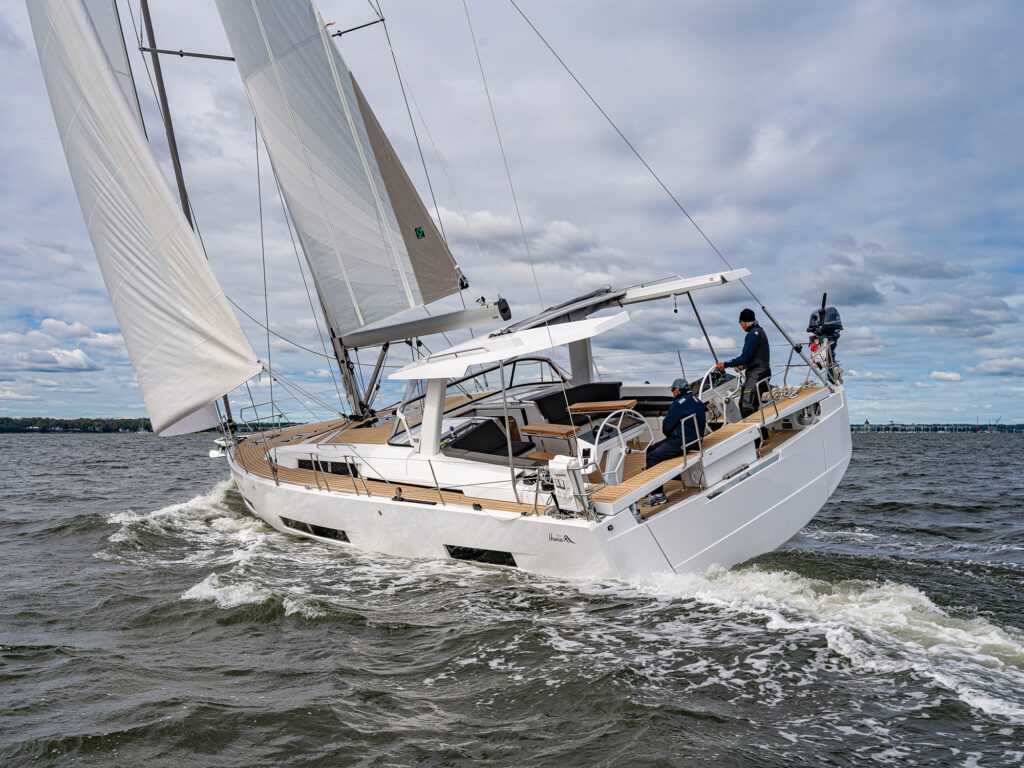
Our test ride sported a 12-volt electrical system with AGM batteries, but a lithium package is available. This boat was loaded with an air conditioner, a Fischer Panda generator, and a 110 hp Yanmar diesel with sail drive that trucked along at almost 8 knots with the throttle down to 2,500 rpm. The smooth emergency-steering setup was as good as or better than anything we tested for the 2024 contest.
Accommodations are equal to or roomier than a comfy shoreside condo. Our test boat was set up with the owner’s stateroom forward and a pair of good double-berth staterooms aft. The straight-line galley is to starboard, forward of the navigation desk, AC/DC panels and so on. There are a trio of fridges along with a freezer. (You will never want for a cold beverage on the 510.) To port, there’s a long settee with a high/low table that drops and converts to a berth. There’s a central island down the middle of the main cabin that includes, among other things, a pop-up television set.
A four-stateroom, four-head layout is aimed at the charter trade. It includes a taut skipper’s cabin forward, which is a sail locker in the three-staterooms configuration.
Topsides, that aforementioned bowsprit opens up a foretriangle that accommodates a double-headsail rig: an outer stay with a genoa and an inner stay with a self-tacking jib, both easily controlled with Furlex furling drums. On our test boat, an in-mast furling mainsail was set off the tall spar (77 feet), though a traditional main is another option. The German-style double-ended mainsheet is a midboom arrangement. All the running rigging is led through belowdecks channels to winches and clutches well aft in the cockpit, and then to the dual steering pedestals. It’s a clean and tidy assemblage.
In 10 to 12 knots of autumn breeze on Chesapeake Bay, the 510 acquitted itself very well. With the big headsail unfurled, it made close to 6 knots on a deep reach and scooted up to more than 8 knots coming up with the wind on the beam. Swapping over to the jib, the boatspeeds were equally favorable, making anywhere between 6 and 8 knots closehauled as the pressure fluctuated in the lulls and puffs. That deep rudder provided a lot of bite, and for pure performance, you can’t beat a long waterline. It was a very pleasant sail.
From soup to nuts, the yacht did everything you’d expect it to, with speed and dispatch—and it’s stylish to boot. There are good reasons that the big yards have come to dominate the big-boat marketplace. The Hanse 510 is a solid example why.
Herb McCormick is a CW editor-at-large and was a 2024 Boat of the Year judge.
Hanse 510 Specifications
| LOA | 52’5” |
| Beam | 16’1” |
| Draft | 6’6”/8’ |
| Sail Area | 1,023 sq. ft. |
| Displacement | 37,346 lb |
| D/L | 155 |
| SA/D | 18.1 |
| Water | 119 gal. |
| Fuel | 53 gal. |
| Engine | 80 hp diesel |
| Mast Height | 77’3″ |
| Design | Berret-Racoupeau Design |
Take the next step
Price: $1,050,000
Contact: hanseyachtsag.com

